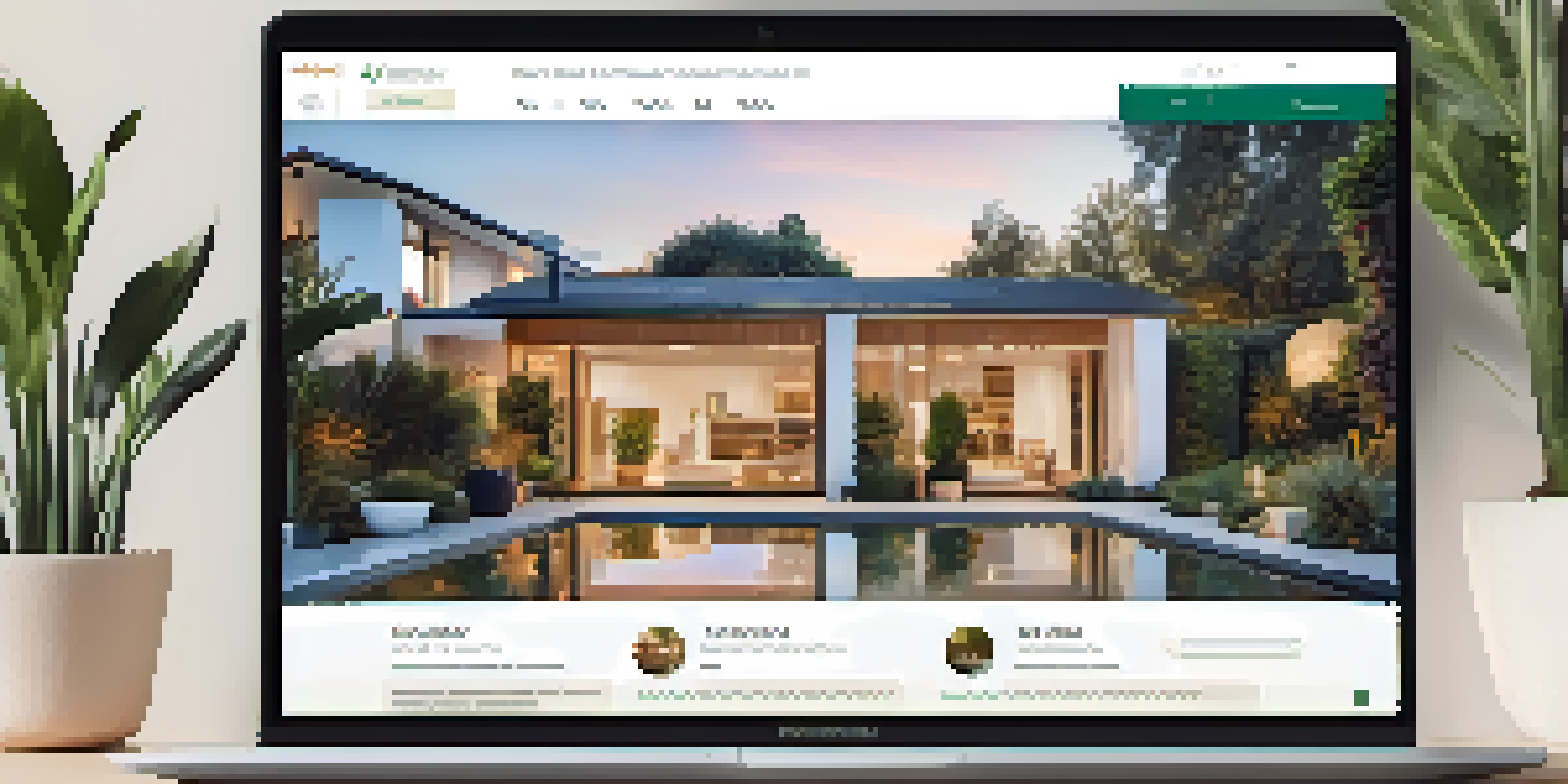Creating a Compelling Website for Real Estate Marketing

Understanding Your Audience for Better Engagement
Before you start designing your real estate website, it's crucial to understand who your audience is. Are they first-time homebuyers, seasoned investors, or renters? Knowing your target market helps tailor the content and design to meet their specific needs and preferences.
Content is king, but engagement is queen, and the lady rules the house!
For instance, first-time homebuyers might appreciate a blog section filled with tips and guides. On the other hand, seasoned investors may look for market analysis and property investment strategies. This understanding will not only enhance user experience but also improve your website's effectiveness in converting visitors into clients.
Incorporating features like a user-friendly search tool can further engage your audience. This way, potential clients can easily navigate listings that fit their criteria, making their visit to your site more enjoyable and productive.
Choosing the Right Platform for Your Website
When it comes to building your real estate website, the platform you choose matters significantly. Popular options include WordPress, Wix, and Squarespace, each offering unique features suited for different needs. For example, WordPress is highly customizable and great for SEO, while Wix is user-friendly for those without technical expertise.

Consider your own comfort level with technology and how much control you want over the site’s design and functionality. If you envision adding custom plugins or features down the line, WordPress might be the ideal choice. On the other hand, if you prefer a straightforward drag-and-drop experience, Wix could be your best bet.
Know Your Audience
Understanding your audience helps tailor your real estate website's content and design to meet their specific needs.
Moreover, ensure the platform you choose is mobile-responsive. With many users browsing properties on their smartphones, a mobile-friendly design is critical for reaching a broader audience.
Designing an Attractive and Functional Layout
The design of your real estate website should be visually appealing yet functional. A clean, modern layout helps capture attention while ensuring easy navigation. Think of your website as a storefront; it should invite visitors in and guide them effortlessly through your offerings.
You can't just place a few ads and expect people to come to you. You have to create a community.
Incorporating elements like high-quality images, ample white space, and clear calls to action can enhance user experience. For instance, a well-placed 'Schedule a Tour' button encourages immediate action, leading to more inquiries. Remember, first impressions matter—your website's design can significantly influence potential clients' perceptions.
Additionally, consistency in your branding throughout the site reinforces your identity. Use a coherent color scheme, typography, and imagery style to create a harmonious look that reflects your brand values.
Showcasing Listings Effectively
Property listings are the heart of any real estate website, so presenting them effectively is paramount. Each listing should include high-quality images, detailed descriptions, and essential information like price, location, and square footage. A well-crafted listing not only informs but also captivates potential buyers.
Consider integrating virtual tours or video walkthroughs to give visitors a more immersive experience. These features allow potential buyers to explore properties from the comfort of their homes, making it easier for them to envision living there.
Choose the Right Platform
Selecting a website platform that suits your technical skills and design preferences is crucial for functionality and user experience.
Don’t forget to include filters and search options that help users narrow down their choices. Whether they’re looking for a specific neighborhood, price range, or property type, these tools can enhance user satisfaction and increase the likelihood of closing a deal.
Incorporating SEO Best Practices
Search engine optimization (SEO) is essential for increasing your website's visibility. By incorporating SEO best practices, you ensure that potential clients can find your site easily when searching for real estate online. This includes keyword research, optimizing meta tags, and creating high-quality content.
For instance, using keywords like 'homes for sale in [Your City]' throughout your content can help improve your search rankings. Additionally, regularly updating your blog with relevant real estate topics can attract organic traffic and establish your authority in the market.
Remember, SEO is a long-term strategy, so be patient. Over time, the effort you put into optimizing your website will lead to increased traffic and more leads.
Engaging Content to Attract and Retain Visitors
Creating engaging content is key to attracting and retaining visitors on your real estate website. This can include blog posts, market reports, and neighborhood guides that provide valuable insights to your audience. Think of content as a way to build relationships; informative articles can position you as a trusted resource in real estate.
Consider sharing personal stories or experiences in the real estate industry to connect with your audience on a deeper level. Anecdotes about successful client interactions or challenges overcome can make your content relatable and engaging.
Engaging Content is Key
Creating valuable and relatable content is essential for attracting and retaining visitors on your real estate website.
Also, encourage user-generated content, like testimonials from satisfied clients. Displaying positive feedback not only builds credibility but also fosters a sense of community on your site.
Integrating Social Media for Broader Reach
Social media integration is a powerful tool for expanding your real estate website's reach. By linking your social media profiles to your site, you create additional channels for potential clients to connect with you. Platforms like Instagram, Facebook, and LinkedIn can showcase your listings and highlight your expertise in the market.
Sharing your website content on social media can drive traffic back to your site. For example, posting a new blog article or a featured listing can entice your followers to visit your website for more information.

Moreover, consider using social media ads to target specific demographics. This targeted approach can help you reach potential buyers and renters who might not find you through traditional methods.